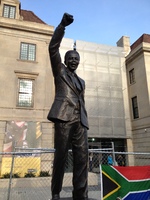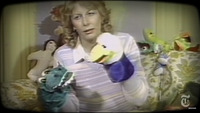Memory and Everyday Life
In this week, we looked at memory and everyday life, or the social psychology of memory. The emphasis is on the idea that remembering never happens in a vacuum but is always socially mediated. Soviet psychologist Lev Vygotsky draws attention to the cultural tools or "memory aids" that support remembering. Peter Berger tells us that biography is shaped by social relations and social structures. And Eviatar Zerubavel, founder of "cognitive sociology" describes the many ways in which society influences the way that people remember. He also introduces the intriguing idea of sociobiographical memory - memories that we don't directly experience but that nevertheless become part of our identity through participation in traditions of remembering.
Creating New from Old
The propagation process of a monstera involves taking a somewhat healthy, mature plant, cutting it from its aerial root keeping its new cuttings intact and submerging the fresh cuttings into new water and later transferring to new vessel for further growth. Pictured in these photos you can see the progression and development of the new plant being grown- the original plant being on the left, propagation of the plant in the middle photo, and the propagated plant transferred and flourishing in its new home in the right photo.
Berger states that as individuals “we ourselves go on interpreting and reinterpreting our own life,” (Berger quoted in Olick et al, 2011: 217) highlighting that self-understanding and transformation of an individual comes from understanding our past, transforming and recreating ourselves through our interpretations and integration of our own history. Berger suggests this process involves reconstructing our lives based on “our present ideas of what is important and what is not” (Berger quoted in Olick et al, 2011: 217). Although plants cannot necessarily “process” and interpret their past in the same ways in which humans can, they can recreate themselves and develop from their previous form and grow anew while still maintaining old parts of itself. Though the original form of the plant may not have been in perfect condition, some parts more damaged than others, the new propagated plant has demonstrated the ability to grow and flourish despite its previous form and history. Similarly, as individuals and as a collective, we can consider our past and the memories, however messy or damaged, and can create, shape, and grow in our own identity in the present. We move forward establishing what parts of our past are relevant in the now, what is worth forgetting, what was simply a part of us based on circumstance and can create and nurture our present moment through our past, thus transforming and developing our identity and self-image. (contributed by CC)
Sociology of the Past: Nelson Mandela Statue
This is an image of the Nelson Mandela statue that is located in front of the South African embassy in Washington, DC. It was created to commemorate the man who ended apartheid in South Africa. He played a large role in the history of the country’s growth after multiple decades of devastation. His actions have made a direct impact in the lives of many, including my grandparents, as they had experienced this first-hand and always told stories about it while I was growing up. As Zerubavel states, “much of what we remember we did not experience personally”, which explains why after years of listening to everything they went through, I had adopted these memories as my own, even though apartheid had ended before I was born (Zerubavel quoted in Olick et al, 2011: 224).
This is an experience that many people go through within their own communities and groups. With this, people can develop what Zerubavel would call a “sociobiographical memory” (Zerubavel quoted in Olick et al, 2011: 224). There is a sense of pain that myself and other newer generations of South Africans feel when thinking about the past events within our community, but we can also take pride in knowing that they paved the way for us to live in peace (contributed by KR).
Helping Them Remember
Content note: brief mention of child sexual abuse, violence
This image is from an interview conducted by a social worker at the Children’s Institute International. She is using puppets to encourage children to “remember” things done to them by staff at McMartin Preschool in L.A.
These sessions produced accusations including outlandish details of occult rituals along with extreme violence and sexual abuse. This rash of alleged Satanic Ritual Abuse (SRA) spread rapidly, with cases reported across the United States throughout the 1980s. No corroborating evidence was ever found, but still, careers and reputations were destroyed. Some workers served prison time.
Now it’s commonly accepted that SRA never occurred at any daycare. We now understand that authority figures can unintentionally create false memories in children, through suggestive and coercive interview methods. In some cases, the “memories” stay with children permanently.
E. Zerubavel discusses the deeply social nature of memory formation and states that an adult can prevent a child from encoding a lived experience into memory. While the shocking McMartin Preschool case illustrates the opposite, it speaks to the same malleability of memory in the face of social pressures. Children’s memories were here dictated by adults, whose own fears had been shaped by broader societal ones (contributed by IC).
How'd You Know Them
This photo captures two friends of mine during a party. Us and others were together after a funeral ceremony for a mutual friend who passed away this past August. I choose this photo because its context reflects two themes from this week's reading written by Berger: biography and conversation. Biographies and conversations are linguist forms of creating perspectives about ourselves and others. When we create things, we want them to satisfy others and especially our own selves. Meaning we will consider what is important to express and what is worth ignoring depending on the current situation as we understand it under the social and cultural reality of the society we are a part of.
To build off of Berger’s quote on page 217, “Thus we have as many lives as we have points of view.”(Olick at al, 2011), is because we have our own perspectives and agency in the world. Someone who is religious, studies biology, is a parent, is a triathlete, lives many different roles and will therefore share differing biographies to certain people in certain social circles. Yet our points of view are also shaped by the media and the conversations we have with friends, family, strangers, mentors, or community leaders. Again however, we choose to remember or scaffold from these conversations what we think is important and what is not, to ultimately “reinterpret our biographies as we move from one social world to the next.”(Berger quoted in Olick at al, 2011: 219).
At the funeral ceremony and after party, I met people for the first time who knew my friend, who had completely different relationships, feelings, and ideas about Ian, which made me feel new ideas and sensation about who he had been. In the end we “have as many lives as we have points of view”, but we also have as many lives as the points of view about us. We interpret ourselves and so will others interpret and reinterpret us (contributed by RB).



